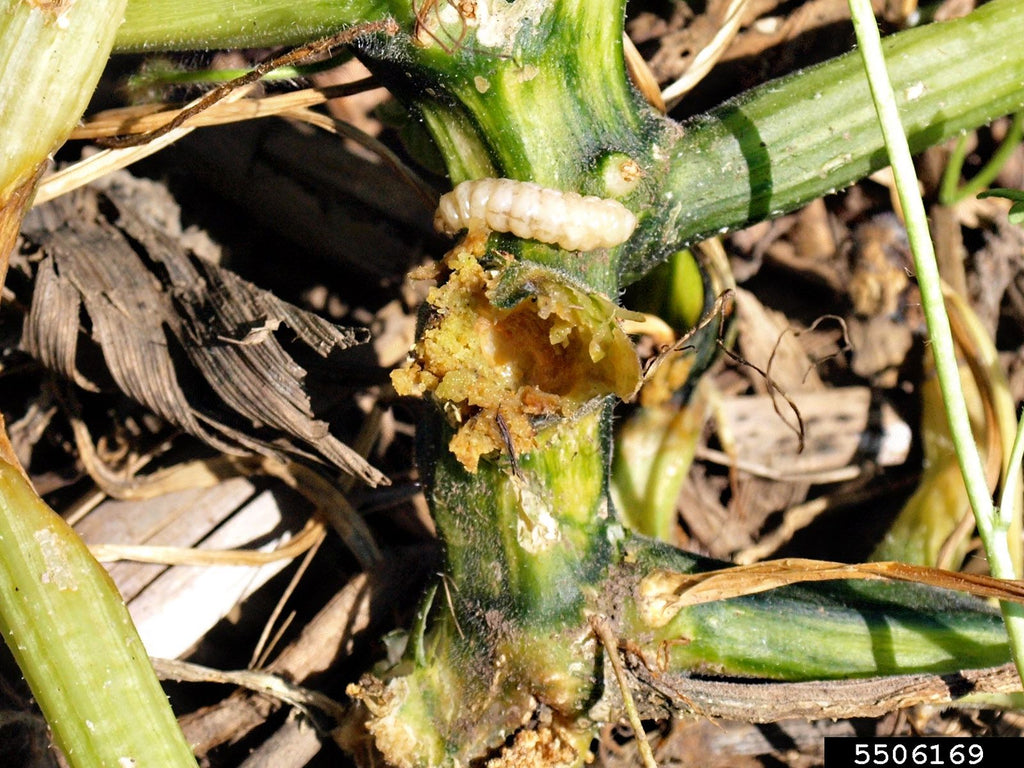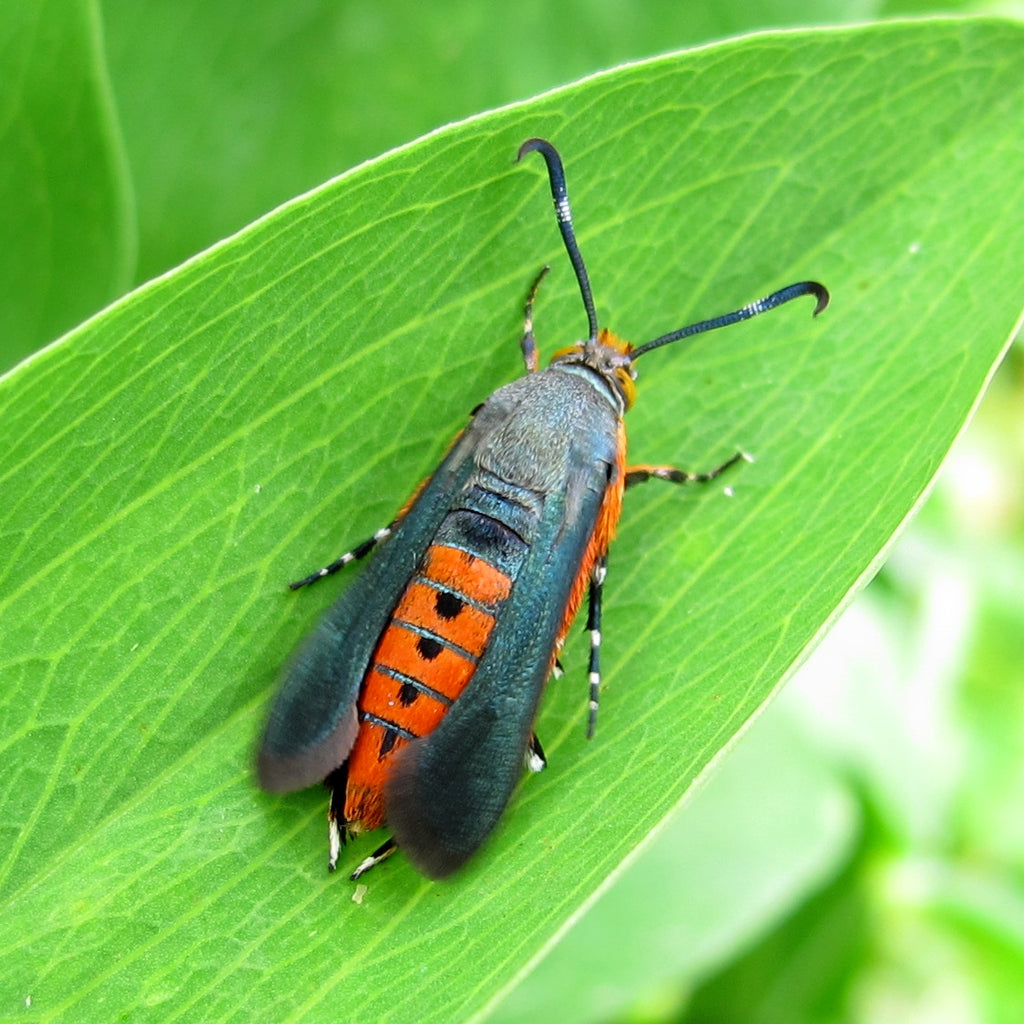
Squash in all their varied and wonderful forms are a popular feature for summer gardens. It’s easy to see why—squash are handsome plants with striking blooms and the veggies they produce are tasty and versatile. And perhaps the best part is that they’re easy to grow and come in a huge number of varietals for nearly any climate condition. Nearly every part of the squash plant is edible, and therein lies the problem. Plenty of garden pests like squash plants, too. We wrote last week about squash beetles, which are a common squash pest in many parts of North America. In response we got requests for information about vine borers. Vine borers are an even more insidious and destructive pest, which prey aggressively on squash plants. So, what are vine borers, and what can you do about them? Let’s dig in!
The vine borer (Melittia cucurbitae), is a member of the order Lepidoptera, meaning that it’s a member of the moth family. With a distinctive black and orange color patter (please pay close attention to the photos for identification), the good news about vine borers is that they’re relatively easy to identify in the garden. Be careful, however—they are occasionally confused with large wasps, which they’ve evolved to imitate. In and of themselves, the vine borer moths are harmless—however, they lay eggs inside the stems of squash plants and that’s where they damage begins. Those eggs grow into grubs about an inch/2.5cm long. As the name suggests, vine borer grubs bore through the vines of many kinds of squash, causing great harm to the plant and eventually killing it. Vine borers are active in the summer, first appearing in mid to late June in most places. Warm climates, like the US Southeast, may see two generations of vine borers a year, but most places only get one round of vine borers.

Vine borer damage is distinctive. A large hole or gouge in the base of the squash plants stem is a tell-tale sign. This hole may grow into a split or tear in the stem, further compounding the damage. Vine borer holes are frequently surrounded by a brownish, grainy material calls fass, which is the solid waste produced by the grub as it eats. If you see any of these signs, you have a problem and it’s time to take immediate action.

So, what can we do about vine borers? With most garden pests, prevention is better than cure and this is especially true for vine borers. Once they’ve taken hold, it’s very difficult to remove them and fix the damage that they’ve caused. Insecticides are largely ineffective against vine borer grubs inside the stems of your plants. Preventing vine borer damage means preventing the vine borer moths from injecting their eggs into the stem in the first place. There are a number of insect repellent treatments designed for vegetable plants, which can work to keep vine borer moths away. Since vine borers most often lay their eggs in the section of the stem closest to the ground, wrapping a few inches at the base in foil, old nylon stockings, strips of plastic bags, or a similar material can help head them off. Row covers can help keep the moths from accessing your plants in the first place making them an affordable, effective option, and you should kill the vine borer moths when possible.

For vining varietals of squash, you can also try burying a few nodes every so often along the length of the vine. This encourages them to put out roots, which can help mitigate vine borer damage if the pests should infest your plants. Otherwise, regular inspection of your squash plants for any sign of borer holes, fass, or damage is a must if vine borers are an issue where you live. If you see damage, you’ll need to act quickly to have any chance of saving your plants. The best approach we’ve found is to start at the borer hole with the most fass and then us a clean, sharp instrument to slit the stem lengthwise until you find and kill the grub. The grub is generally in the stem a few inches above the hole, and by killing and removing it you can hopefully stop the damage it causes. Successive plantings can also help, so you have replacement plants available should the worst occur.
Vine borers are a serious problem, but with an understanding of how they work and some preemptive action you can hopefully avoid them. If you have additional tips or tricks for dealing with vine borers, please let us know in the comments section! Gardzen is all about community and by sharing information and ideas we can all be more successful in the garden this year.

Leave a comment